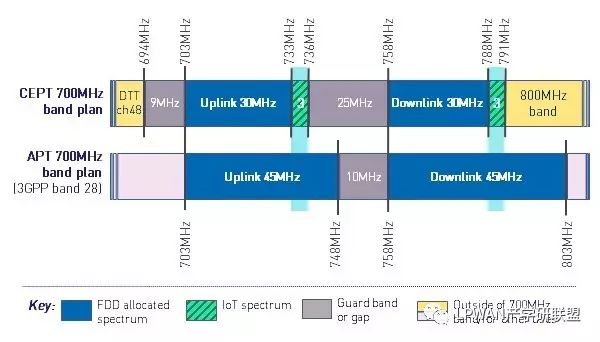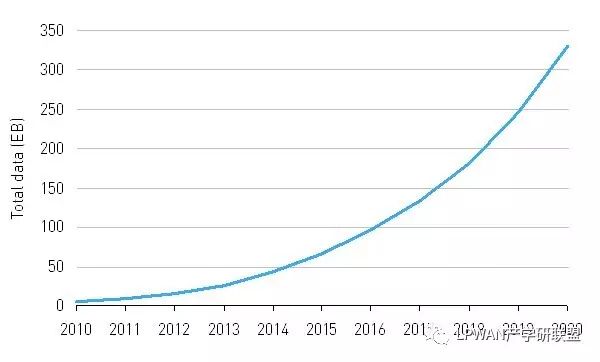The development of NB-IoT standardization in the past year of 2016 has created an urgent demand for commercial deployment. Many mainstream telecom operators, such as Deutsche Telekom and Vodafone UK, are carrying out large-scale deployments and promotions. Currently, there are three deployment options: 1. Deploying in the same frequency band as LTE 2. Deploying at the edge of existing LTE frequency bands 3. Allocating a separate frequency band for deployment. The following will provide a brief analysis of the deployment and the factors involved.
Various wireless communication technologies have contributed to the rapid rise of the IoT market. In the past two years, LPWA technologies have also joined the fray, with NB-IoT being one of them. This modified version of the 4G (LTE) technology uses a narrow bandwidth (200KHz compared to LTE’s 10MHz).
NB-IoT’s commercial use shares some similarities with 5G, but currently, operators can quickly leverage NB-IoT to propose easily implementable IoT business models, whereas the commercial use of 5G still requires further waiting. From the perspective of RAN (Radio Access Network), there are three deployment methods.
· Two of these methods are relatively easy to implement because the frequency bands are already authorized: one is deploying in the same frequency band as LTE, and the other is deploying at the edge of the existing LTE frequency bands (which completes the deployment without affecting the performance of the LTE core). The third method requires using a frequency band different from those currently used for mobile communications.
· It should be noted that regulatory authorities have not currently allocated a separate frequency band for NB-IoT, although it is not difficult to do so. For example, IoT frequency bands can start from 700MHz (the so-called “2x3MHz”: 733-736MHz and 788-791MHz). This 2x3MHz band is very close to the main mobile communication 700MHz band, but it will not significantly impact the width of the frequency band used for mobile communications, as shown in Figure 1 below.
 Figure 1: Frequency Band Plan for 700MHz in Europe and Asia, highlighting the 2x3MHz band for IoT (Source: Analysys Mason, 2017)
Figure 1: Frequency Band Plan for 700MHz in Europe and Asia, highlighting the 2x3MHz band for IoT (Source: Analysys Mason, 2017)The third option seems to have advantages over the first. For example, operators can conduct IoT services without occupying too many frequency resources or affecting the service functionality of mobile communications. Similarly, the second option occupies less mobile communication resources compared to the first but cannot provide the same level of communication as a separate frequency band.
Using a separate frequency band also has more benefits, such as achieving high-quality indoor coverage through optimization. This is beneficial for terminal devices, as lower power consumption occurs under indoor coverage. Some IoT application scenarios require high levels of network quality (such as medical applications and vehicle networking applications), and a separate frequency band can provide more reliable and effective connections in these applications, while also enhancing network security.
Although there are certain compromises in performance, Vodafone’s plan for deploying NB-IoT is to use its existing 800MHz band in the European market. Vodafone has indicated that its 800MHz LTE RAN is already compatible with NB-IoT (with no significant additional investment required in software and hardware). Of course, the biggest benefit of Vodafone doing this is the ability to quickly capture the market.
 Figure 2: Global Mobile Data Traffic Growth Forecast, including IoT Traffic (Source: Analysys Mason, 2017)
Figure 2: Global Mobile Data Traffic Growth Forecast, including IoT Traffic (Source: Analysys Mason, 2017)Vodafone’s frequency bands (including the 2.6GHz band and sub-1GHz bands like 900MHz) help reduce the impact on network performance. However, other smaller operators with less frequency band occupancy are less likely to mitigate this impact.
Industry insiders point out that the convenience of NB-IoT deployment mainly lies in the ability to use LTE infrastructure to ensure deployment speed. The quality of network services mainly depends on the frequency band used, which is the allocation scheme that operators can distribute to NB-IoT after weighing their options.
Currently, there is a lack of a unified NB-IoT frequency band, and relevant regulatory authorities are skeptical about allocating a separate band for it. Moreover, the allocation of a separate band is bound to raise some policy issues, such as: how many independent networks can this 2x3MHz band actually support? But how many independent networks are genuinely needed? Will it affect existing communication services (2G, 3G, 4G)?
Therefore, there is currently no unified regional or global solution for independent frequency band allocation, and it seems that the early deployment of NB-IoT using deployment methods similar to Vodafone’s is more appropriate. At the same time, these early explorations by operators will determine whether there is a need to allocate a separate frequency band for NB-IoT.